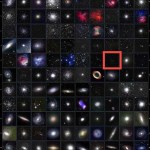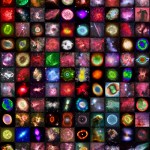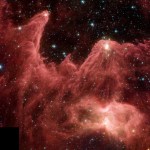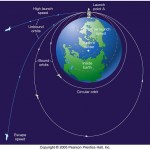red giant
"Always try to keep a patch of sky above your life." -Marcel Proust
Welcome to another Messier Monday, where each week we take an in-depth look at one of the 110 deep sky objects that make up the Messier Catalogue! Messier was not the first person to try and make an accurate, large catalog of deep sky objects, but he was the first to successfully do so: most of his objects both actually exist, are deep sky objects, and had their positions recorded correctly.
Image credit: © 2008 Space-and-Telescope.com.
Most, that is, but not all. Today, we'll be looking at the open…
"A wise old owl lived in an oak
The more he saw the less he spoke
The less he spoke the more he heard.
Why can’t we all be like that wise old bird?" -The Immortal Poet Bromley
To your naked eye, the night sky appears littered with thousands of individual points of light: the stars and planets so familiar to us. But through even a small telescope or a pair of binoculars, not only do the number of visible stars increase into the hundreds-of-thousands or even the millions, but a slew of deep-sky objects become visible to us as well. Each monday, we highlight one of the deep-sky objects from…
"A colour is a physical object as soon as we consider its dependence, for instance, upon its luminous source, upon other colours, upon temperatures, upon spaces, and so forth." -Ernst Mach
Our Sun, like all Sun-like stars, will come to the end of its life someday. All the hydrogen fuel in its core will eventually burn up, and when this happens, the core itself will begin to contract. When temperatures are finally high enough, the end product of hydrogen fusion -- Helium-4 -- will begin to fuse in the contracted core, and the Sun will expand into a Red Giant.
Image credit: Northwestern…
"Man alone is born crying, lives complaining, and dies disappointed." -Samuel Johnson
But the stars, as opposed to humans, are born shining, with hundreds (or more) of brothers and sisters, shine ever more brightly over their lifetimes, and die in spectacular fashion. As far as we can tell, here's the past, present and future story of all the Sun-like stars in our galaxy.
Bok Globule Barnard 175; image credit by Jerry Lodriguss of http://www.astropix.com/.
At some point in the far distant past, every star in our galaxy was once no more than a molecular cloud of gas, with gravity attempting…
You and I have lived on planet Earth long enough to know that if you want to launch something into space, it needs to travel fast enough to escape the pull of Earth's gravity. Launch it with too slow of a speed, and it crashes back into Earth. Launch it with a little more speed, and you can send it into orbit (like a satellite). But launch it fast enough, and it can escape from Earth's gravity altogether. The speed to completely escape from Earth's gravity is pretty fast: about 11.2 km/s, or 7 miles per second!
Make something denser and more massive, and you'll have to go faster and faster…




